FIRST STOP: TRAUMA DEPARTMENT
Most patients arrive by helicopter. It's not uncommon for a half-dozen critically wounded people to arrive at once. The flow of casualties is unrelenting.
Enter Gallery One 
Most patients arrive by helicopter. It's not uncommon for a half-dozen critically wounded people to arrive at once. The flow of casualties is unrelenting.
Enter Gallery One 
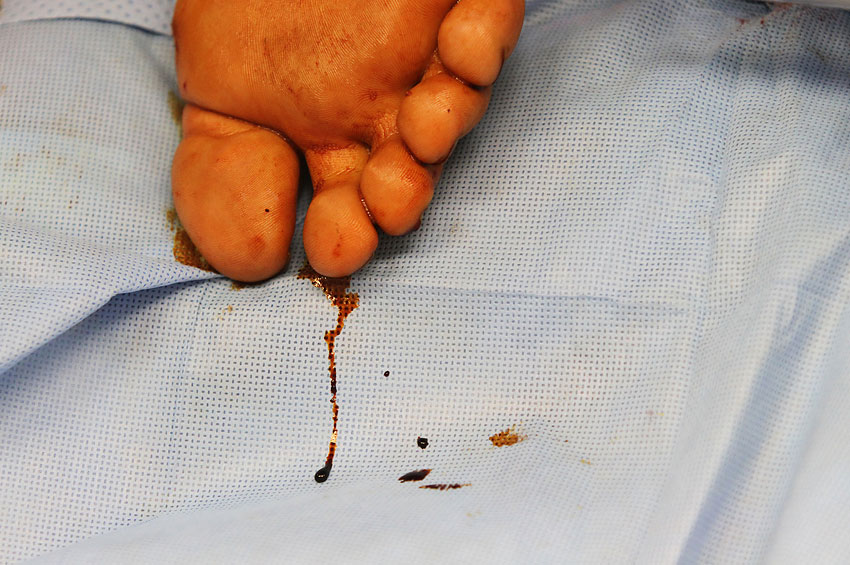
A mixture of blood and iodine drips from the foot of Pvt. Dean Hines, a 21-year-old soldier with the 10th Mountain Division, after he was hit by a daisy chain IED - three bombs connected to the same pressure plate rigged to detonate at once.
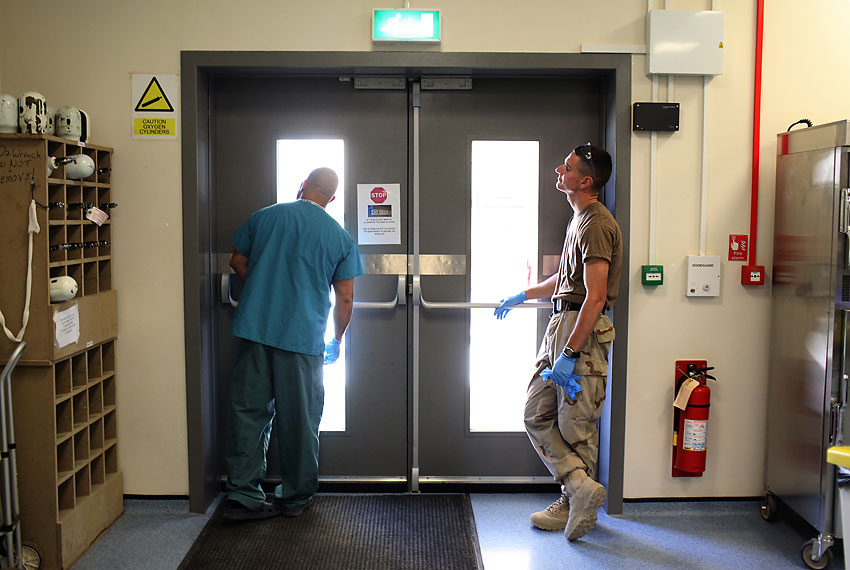
Corpsmen Eric Gonzales, left, and Lyndel Hart, both from San Diego Naval Medical Center, wait in the trauma department for a patient to arrive. Nearly three-quarters of the patients here come directly from the battlefield, the vast majority of them victims of insurgent-made bombs. Their signature wounds are double- and triple-limb amputations with severe injuries to the pelvis and genitals.
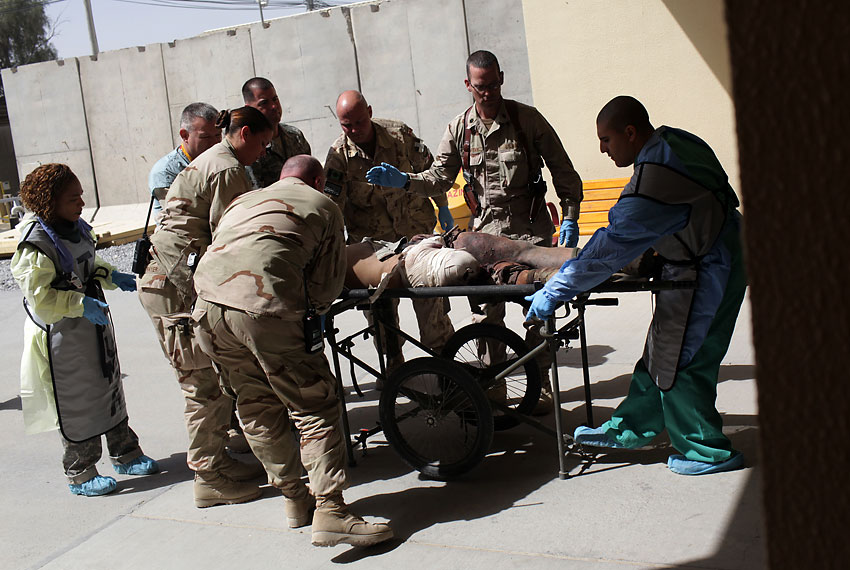
Army Cpl. Eddie Ward is unloaded from an ambulance outside the trauma department. About an hour earlier, he stepped on a land mine. He was days from the end of a yearlong tour.

Lt. Cmdr. Ron Bolen, a Navy reservist who heads the hospital's trauma department, signals staff that he's headed to trauma bay No. 2 with a patient.
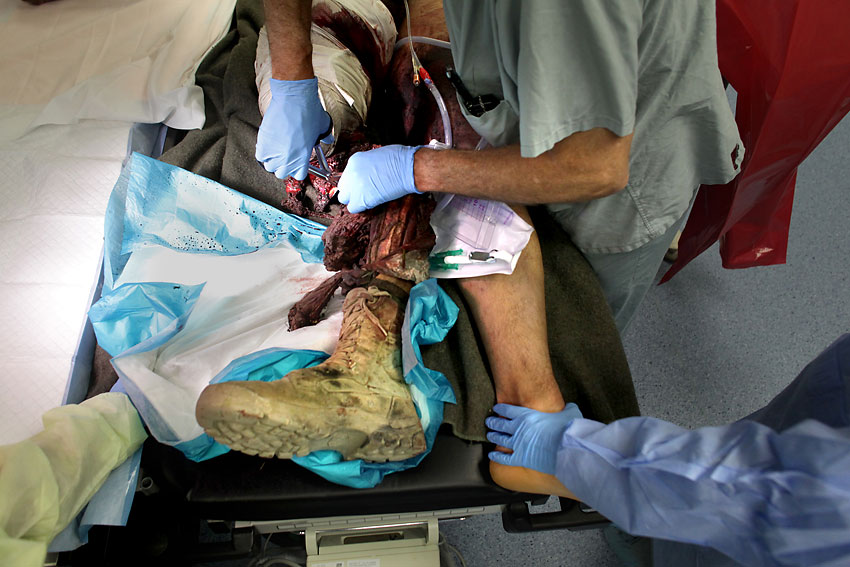
Minutes after Army Cpl. Eddie Ward arrives in the operating room, Lt. Cmdr. Kirk Sundby severs the tissue connecting his right calf and thigh. Next, the surgical team will clean his wounds.
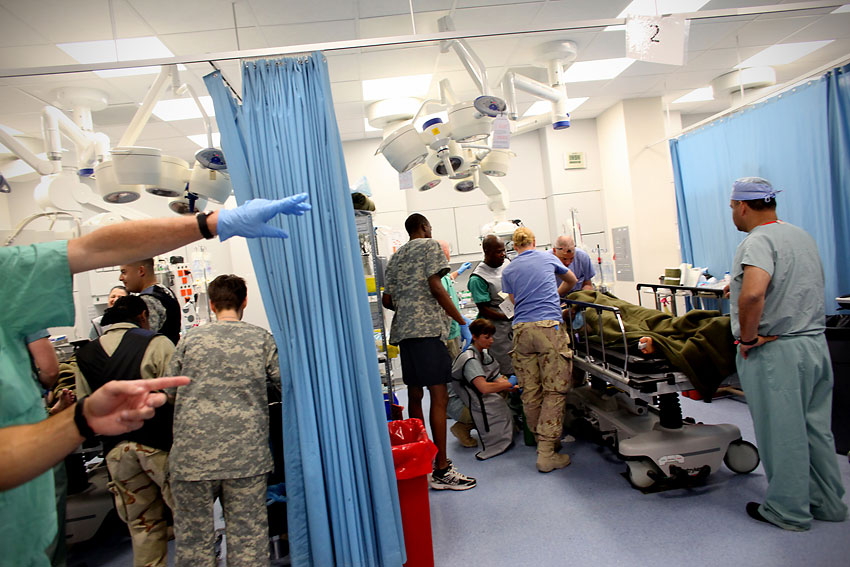
Trauma teams assess two patients who just arrived. For service members who get here with a pulse, the survival rate is between 97 and 98 percent.
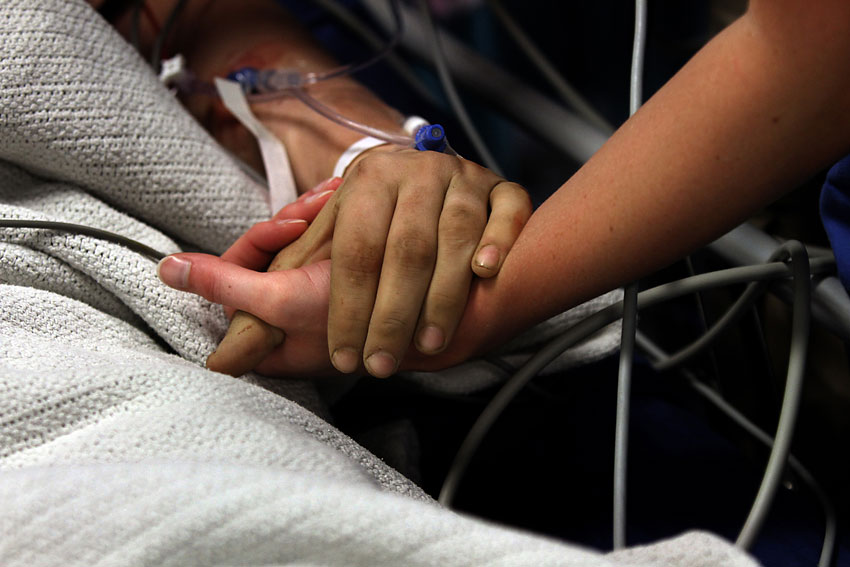
A member of the staff holds a patient's hand, comforting him while he waits in the trauma department. "We meet a lot of people on the worst day of their life," says Cmdr. Jim Sullivan, a Navy reservist and ER doctor.
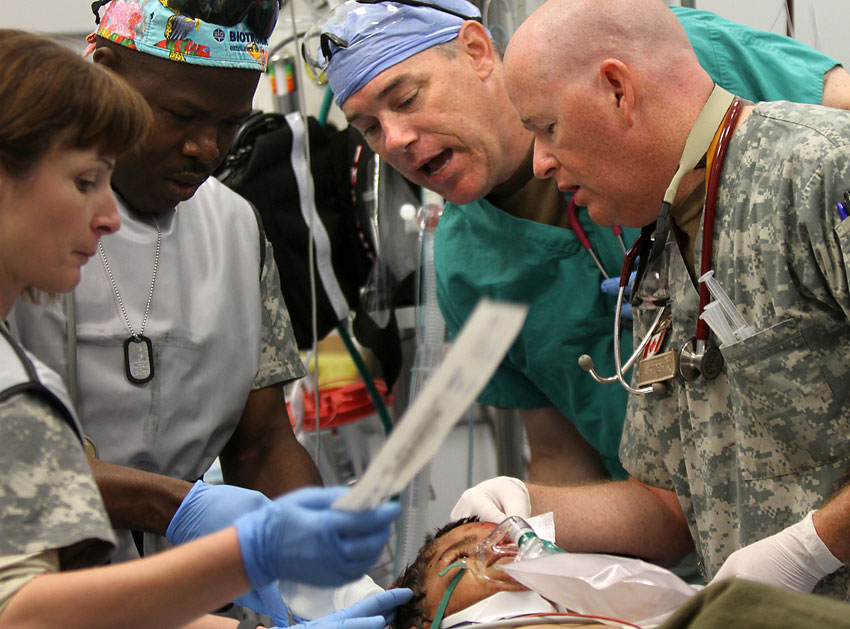
A trauma team assesses an Afghan child who just arrived. About half the hospital's patients are Afghans, and a large portion are children. From left: Petty Officer 2nd Class Tammi King, Lt. Cmdr. Dave Powell, Cmdr. Jim Sullivan and Capt. Ray Hartery of Canada.
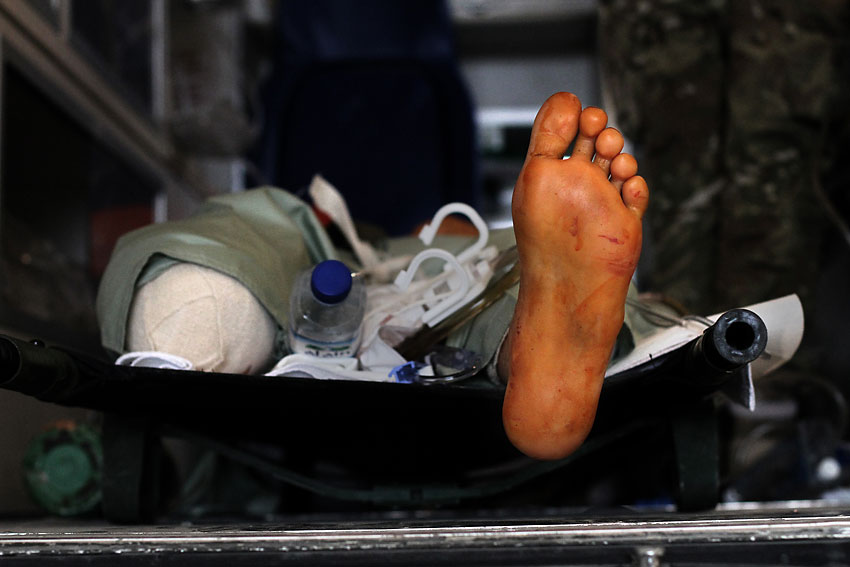
An Afghan amputee is brought to the hospital for care. Over the years, the hospital's doctors and nurses have taken on a side mission - treating Afghans. It now accounts for nearly half of everything they do. In addition to local civilians, the hospital accepts members of the Afghan national army and police and, perhaps most surprising, enemy combatants wounded in the fighting.
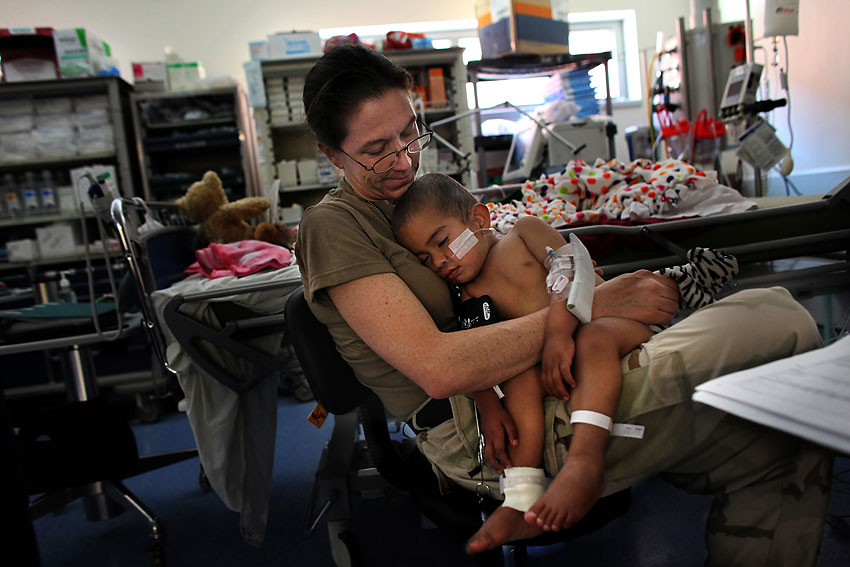
Cmdr. Erin Robertson holds a child recovering from pneumonia. Robertson is a critical care nurse and worked at Portsmouth Naval Medical Center from 2000-05. While few American patients spend longer than 36 hours here, Afghans often stay weeks because there is nowhere to send them on to.
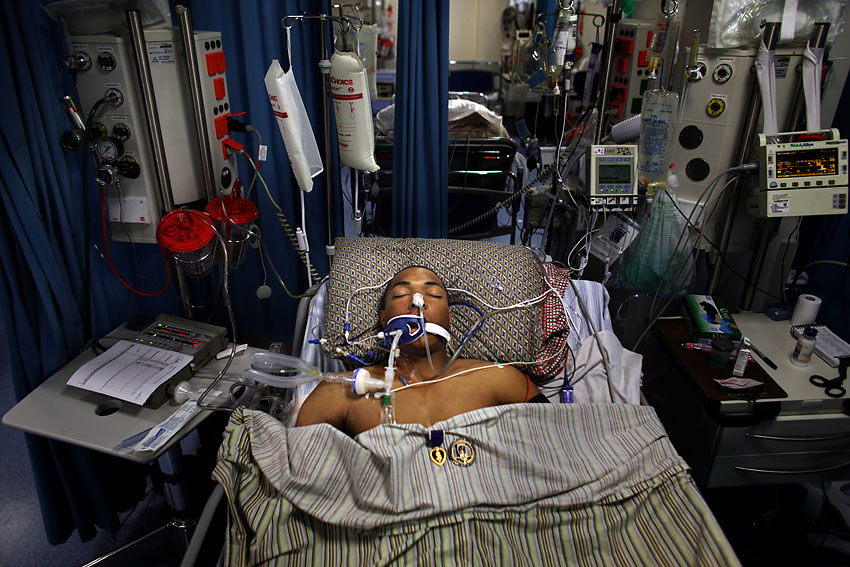
Army Cpl. Eddie Ward sleeps after surgery, his Purple Heart pinned to his bedsheet. He lost most of his right leg in a land mine explosion a few hours earlier.
From the operating room to the recovery ward, the hospital staff spends every day working to keep death at bay.